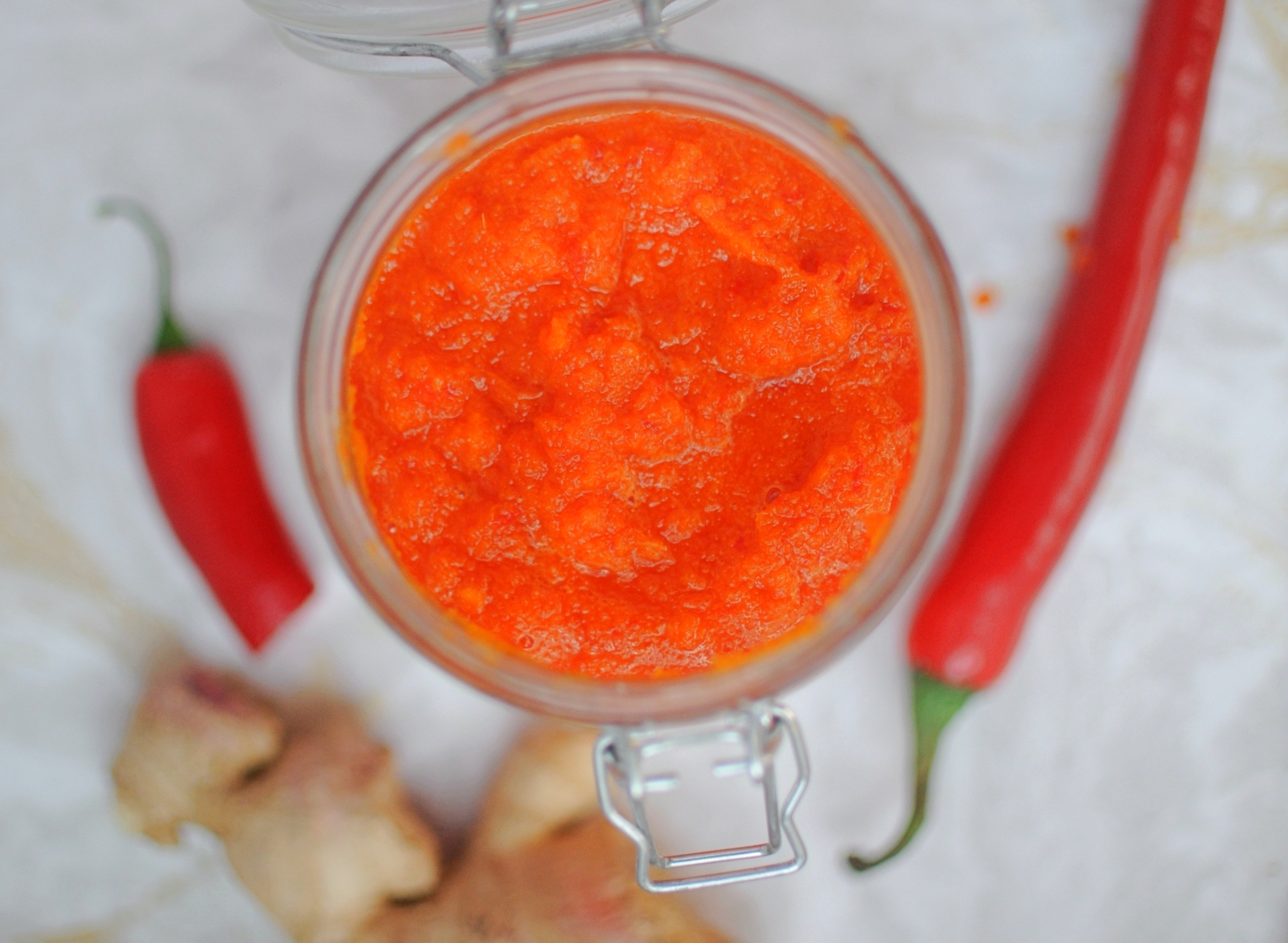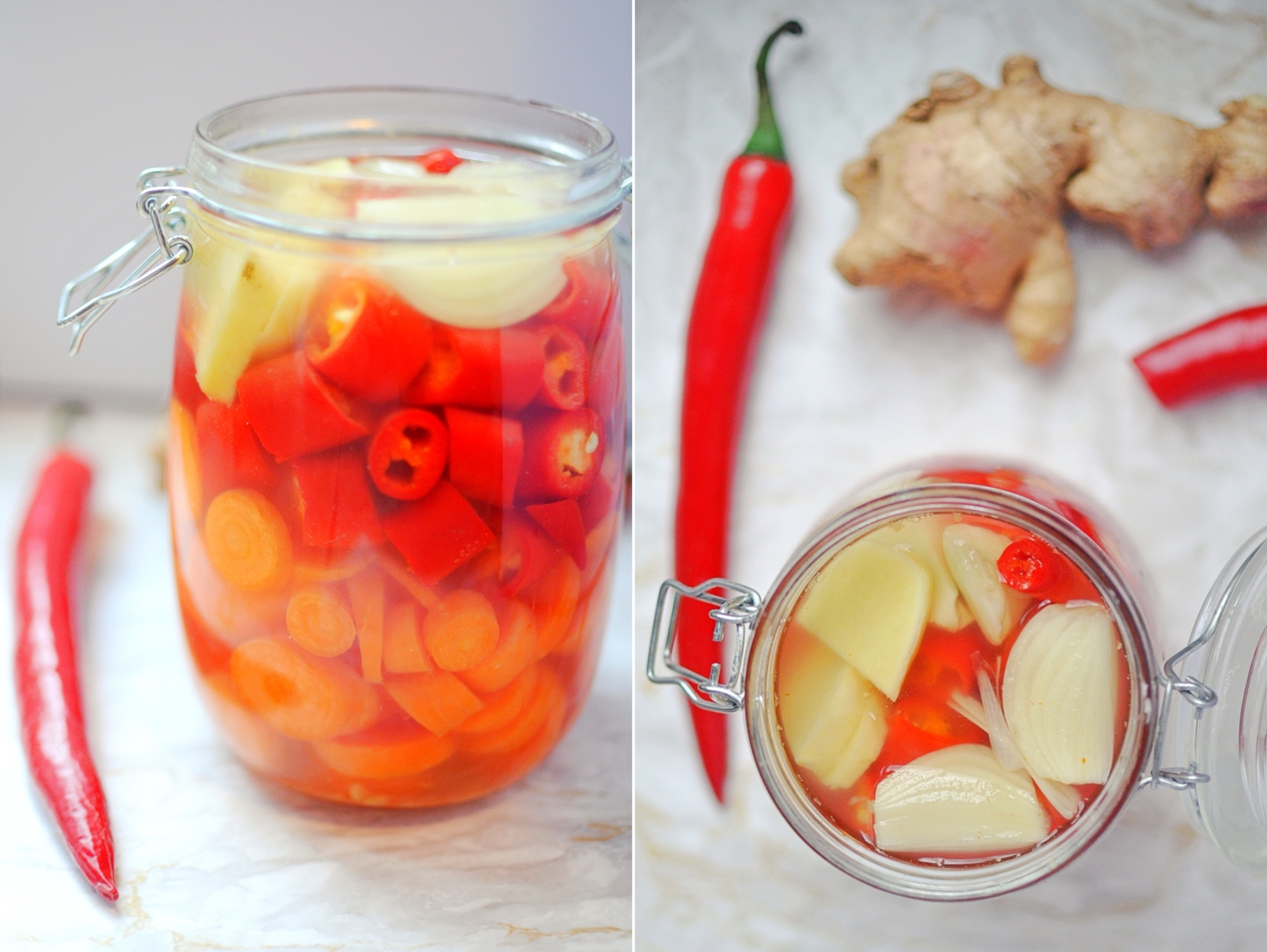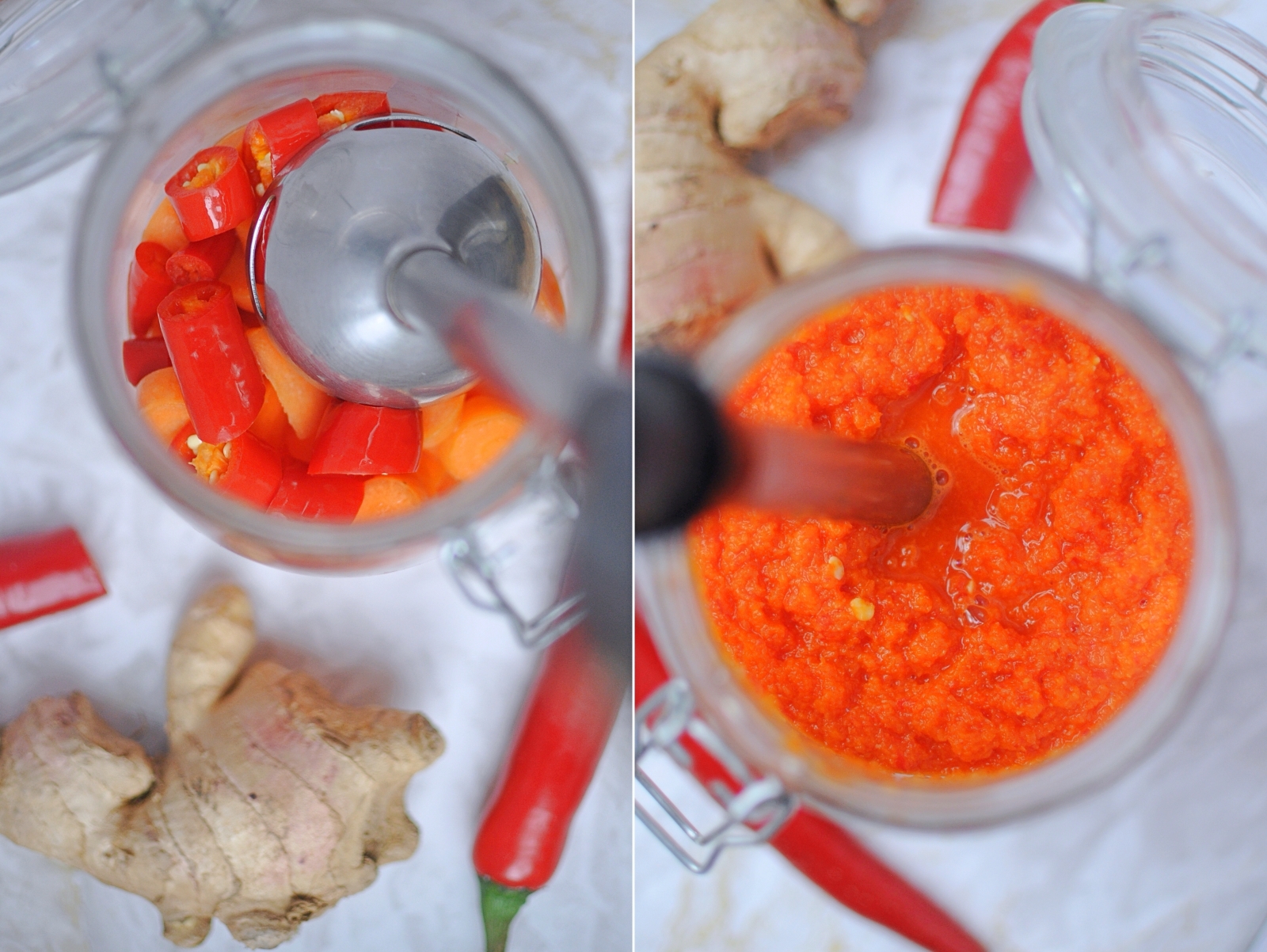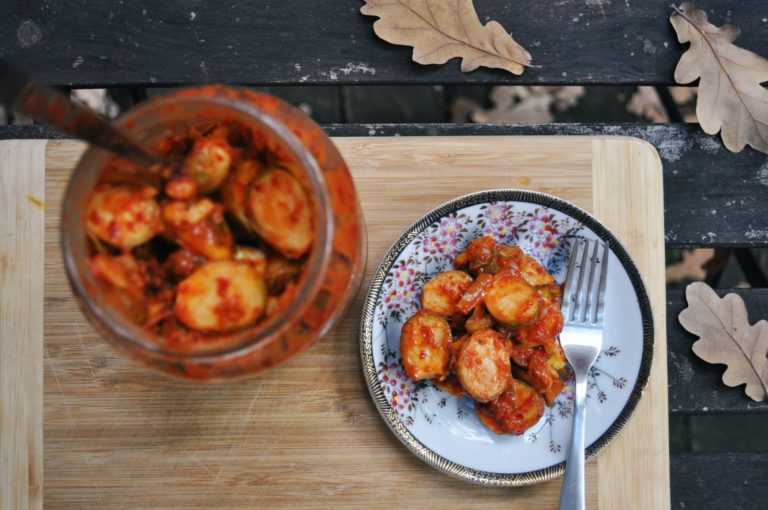Homemade hot chilli sauce! Fermented!

Are there any fans of hot sauces here? Or any fans of fermentation? It’s about time we connected those two worlds and created a simple fermented chilli sauce full of flavour and probiotics. This sauce works great as a spicy finish to all kinds of dishes from sandwiches, through dishes with rice and noodles, to different kinds of soups. A teaspoon (or even a tablespoon) of this sauce can also be used as part of the flavour base for pad-thai, curry, or your favourite Asian soup. You can just use this recipe as an inspiration and adapt the taste and texture to your liking.
Ingredients for about 800ml of sauce
- about 250g carrots
- about 250g chilli peppers
- 500ml of cooled boiled water
- 2 tsp salt
- Optional (I recommend using all of these ingredients): 2 cloves garlic / half an onion / a small piece of peeled ginger
- 2-3 tbsp of sugar
1. Prepare a fermentation jar (at least one litre): wash it thoroughly and preferably rinse it with some boiling water to kill any germs that could interfere with the fermentation process.
2. Mix the water and salt thoroughly.
3. Wash the chilli peppers and carrots and cut them into small pieces (you can leave the carrots unpeeled). Do not remove the seeds and insides of the peppers. If you want extra flavour, add the garlic, onion, or ginger (I recommend adding at least one of them!)
4. Transfer the vegetables to a jar and, if necessary, gently press them down so there is hardly any space left between them.
5. Pour in the salted water to cover all the vegetables. If they come to the surface, use a fermentation weight to keep press them down. Alternatively you can use a small plastic bag filled with water.
6. Cover the jar, not necessarily completely tightly. Leave it for at least 3-4 days at room temperature.
7. After a few days, when the fermentation process has started, pour some of the water out from the jar into a bowl. Blend the vegetables into a smooth paste / sauce: you can use a hand blender to blend them directly in the jar or transfer them into a blender. When you get a smooth texture, gradually add some of the fermented water to the sauce and blend it until you get the desired, semi-fluid thickness. Taste it and balance the flavour with some sugar.
6. Put the sauce back into the jar. Store in the refrigerator for several months. The fermentation process will continue and the flavour will evolve.
- The jar should not be tightly closed or it should be opened from time to time to let a little air in.
- As it happens with fermented food, you can significantly extend its life by not putting dirty cutlery inside the jar – it is really worth using a separate spoon for the sauce.





